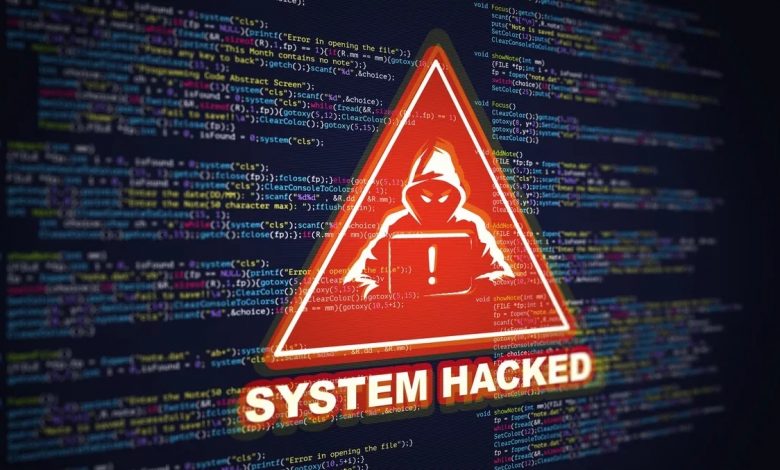What Would Data Breaches Cost You – Would You Survive To Tell the Tale?

In an age where data is akin to the lifeblood of our digital existence, it’s become increasingly clear that no one – not individuals, corporations, or governments – is immune to the relentless onslaught of cyber attacks. In fact, it seems as if our collective dependence on technology has spawned a virtual gold rush for cybercriminals. So, here’s a provocative yet inescapable truth: no matter how much we invest in cybersecurity, we must accept the inevitability of data breaches.
Data protection is no longer a luxury; it’s an absolute necessity. It forms the foundation upon which our increasingly digitised world stands. A single breach can topple empires, destroy careers, and expose the private lives of millions. And yet, despite the ever-looming threat of cyber attacks, there’s a curious sense of complacency in our collective approach to data security.
While this may seem like a grim outlook, it’s not meant to evoke despair. Instead, let it serve as a rallying cry – a call to arms if you will – for individuals, businesses, and governments alike to recognise the importance of data protection and take the necessary steps to bolster our digital defences. For, as sure as the sun will rise, cyber attacks will continue to plague our virtual landscapes. The question is not if we will be attacked, but when – and more importantly, how we’ll respond when that day comes.
Long-Term and Short-Term Repercussions of Data Breaches: The Human Impact
The real-life consequences of data breaches are severe, far-reaching, and often controversial. They affect not only the targeted organisations, but also their customers and end users, who face potential identity theft, financial loss, and personal anguish.
Let’s take a closer look at the human side of data breaches and explore the pain points and repercussions faced by end-users.
- Loss of Privacy and Identity Theft
The FTC received 5.7 million reports of fraud and identity theft in 2023, of which 1.4 million were instances of identity theft. When personal information, including Social Security numbers, addresses, and dates of birth, falls into the wrong hands, end-users face the very real threat of identity theft. This can lead to unauthorised access to their bank accounts, fraudulent credit card charges, and even the creation of entirely new accounts in their names. The ensuing chaos can take years to unravel, with victims suffering severe financial and emotional distress. - Emotional Toll and Reputation Damage
The emotional impact of a data breach can be equally devastating. End-users may feel betrayed by the companies they entrusted with their data and experience a loss of trust in online services. The mental anguish caused by the exposure of personal details or embarrassing information can lead to significant anxiety, fear, and depression. In some cases, the impact on an individual’s personal and professional reputation can be irreparable. - Financial Losses and Legal Consequences
On average, Forbes estimates that firms will spend USD $1.85 million in 2021 to recover from a ransomware attack. In 32% of cases, victims pay the ransom and recover 65% of their data. For end-users, they may be forced to spend their own money on credit monitoring services or to recoup stolen funds. In some instances, victims may be compelled to take legal action against the breached company, further adding to their emotional and financial burdens. - Healthcare Breaches and Life-Threatening Consequences
A total of 33 occurrences involving hacking and other IT issues were recorded in February 2023, making up 76.7% of all breaches reported that month, as documented in an article in HIPAA Journal. In all, 5,497,797 records (or 99.59%) were compromised in these events during the month of February. Stolen medical records can lead to incorrect diagnoses, mistreatment, and potential loss of life. Additionally, the exposure of sensitive health information can lead to further personal embarrassment and potential discrimination.
Why then do we just discuss the pain story from the perspective of the end-users? Large organisations can frequently afford to lose money or even have the funds to pay the fine for a data breach. Due to the fact that many of these large businesses were either not properly punished for their actions or simply got away with it in certain countries as we discussed during our last discussion of this subject, we occasionally feel that it is borderline unjust. Time, money, and lives are lost due to this unjust treatment!
What Can the Behemoths Do?
Being prepared for the inevitable breach is tantamount to survival. As the old saying goes, “Failing to plan is planning to fail.” But in this brave new world of hackers, bots, and digital espionage, planning for failure might just be the key to success. It’s here that the importance of a well-tested recovery plan comes into sharp focus.

David Lenz, Vice President of Asia Pacific at Arcserve, astutely points out, “Backing up data to the cloud or on-premises is a critical and cost-effective first step in any disaster recovery plan.” But a backup alone isn’t enough; to truly safeguard against the potentially devastating fallout of a data breach, organisations must complement their backups with a well-honed recovery plan.
Imagine, if you will, the chaos that would ensue if a city’s emergency service team had never once conducted a fire drill. The same principle applies to data recovery plans; without proper testing and simulations, organisations are essentially flying blind when disaster strikes. David emphasises the importance of this often-overlooked aspect of data protection, stating that testing recovery plans through simulations “allows the organisation to see how well their recovery plan works.”
Yet even the most well-rehearsed recovery plan can fall flat if the backup images themselves are faulty or outdated. David notes the significance of this crucial step, urging organisations to regularly test their backup images and fix any problems that may arise. By staying vigilant and proactive in the face of a seemingly endless barrage of cyber threats, organisations can significantly minimise the potential long-term damage to their enterprise.
Implementing a Backup and Recovery Solution

Data has taken centre stage and protecting it has become paramount for organisations across the globe. Chua Chee Pin, Area Vice President of ASEAN, Hong Kong, Korea, Japan, and Taiwan at Commvault, remarks, “Leaders have been proactively stepping up their security measures and taking the necessary steps to tighten their data protection infrastructures.” The responsibility of safeguarding data lies squarely on the shoulders of the organisations that collect, process, and store it.
One critical aspect of data protection is having a robust backup and recovery solution in place. With an increasing number of companies embracing cloud technology, cloud backup and recovery solutions have gained traction. Chua highlights the benefits of outsourcing data management to third-party service providers who possess “the right resources and expertise to manage their data.” By using cloud backup and recovery solutions, organisations can enjoy simplified operations, lower costs, and better compliance with evolving regulatory requirements.

Continuous data protection is essential for businesses to ensure their valuable information remains intact in the face of cyber attacks, system failures, or human error. Aaron Bugal, Field CTO, APJ, Sophos, emphasises the need for organisations to back up their data daily, with a copy stored offline and off-site. This practice enables businesses to reload their data quickly, minimising financial losses and downtime in the event of a breach.
Moreover, a backup and recovery solution should provide quick access to the stored data. Companies must be able to recover their data efficiently to maintain business continuity and minimise disruption. As Aaron suggests, a well-thought-out incident response plan is crucial for organisations to reduce the immediate and long-term impact of a cyber attack.
Fighting Back
As we delve into the complex realm of addressing data breaches, it becomes essential to explore the diverse strategies recommended by industry leaders and experts, with the aim of mitigating the repercussions and averting future occurrences.

First and foremost, understanding the breach is key. As Fabrice Bartolucci, Regional GM of Southeast Asia & Hong Kong at Exclusive Networks, stresses the importance of being proactive, organisations must audit the affected systems to identify the extent of the damage and the vulnerabilities that allowed the breach to occur. This process will help organisations pinpoint the weak spots in their defences and make the necessary changes to fortify their systems.
Once vulnerabilities have been identified, performing risk assessments is the next logical step. This involves evaluating the likelihood and impact of potential threats, as well as prioritising remediation efforts. By addressing the most pressing vulnerabilities first, organisations can systematically mitigate the risks associated with data breaches.

Another essential aspect of responding to a data breach is ongoing staff training. As Nick McKenzie, CISO at Bugcrowd, points out, general awareness of the red flags in phishing campaigns is the best form of control and protection. Companies must invest in regular training programmes to teach employees how to recognise phishing attacks and other potential security threats. This, in turn, will help prevent future breaches by reducing the chances of human error.
In an age where technology is advancing at a rapid pace, when it comes to spotting and stopping data breaches, data analytics and automated solutions backed by AI and machine-learning may be crucial. Deloitte claims that predictive analytics can be carried out automatically in their present form. By employing these cutting-edge technologies, organisations can quickly identify anomalies and potential threats, thus allowing for a swift response.
The Future of Data Protection Is in the Hands of Everyone
Across all sectors, from individuals to businesses to governments, we each hold a responsibility in safeguarding our data. By raising awareness of the risks, implementing measures to counteract them, and fostering collaboration, we can contribute to building a more secure digital landscape.
Here are some specific things that individuals, businesses, and governments can do to improve data protection:
Individuals
- Use strong passwords and two-factor authentication.
- Be careful about what information you share online.
- Be aware of phishing scams and other online threats.
- Keep your software up to date.
- Back up your data regularly.
Businesses
- Invest in security measures, such as firewalls and intrusion detection systems.
- Train employees on security best practices.
- Implement data security policies and procedures.
- Conduct regular security audits.
- Be transparent with customers about data collection and use practices.
Governments
- Create and enforce data protection laws and regulations.
- Provide funding for security research and development.
- Work with businesses and individuals to raise awareness of data protection issues.
- Promote international cooperation on data security.
By embracing these measures, we can collectively work towards forging a more secure digital environment.




